While perusing the New Zealand Walking Access Mapping System (WAMS) for adventure ideas, I came across something rather intriguing. I’d seen plenty of paper roads – roads that legally exist but haven’t necessarily been built – but this was the first time I’d seen an entire paper town. Nestled in the remotest hills of Otago’s Dunedin district, not much appears to remain of the old gold mining settlement of Nenthorn. But if there’s anything still there to be found, I am the adventurer who will find it!

So I gathered my crew – Dad, Mum and good friend Megan. We packed a picnic and set off to find our mysterious paper town. To this purpose we headed north from Dunedin along State Highway 1, then turned off on to McGrath Rd near Karitane. You know you’re going somewhere seriously out of the way when you’ve barely started and you’re already on a dirt road.
McGrath Rd gave way to the atmospherically-named Ramrock Rd, taking us deeper into the hills. We navigated around several escaped sheep to cross the north branch of the Waikouaiti River at Bucklands Crossing, and it was beyond this point that the scenery began to get truly grand.
These inhospitable golden hills, the deep cold valleys, the strange and twisted rocky tors…this is what I longed for during my exile in Europe!
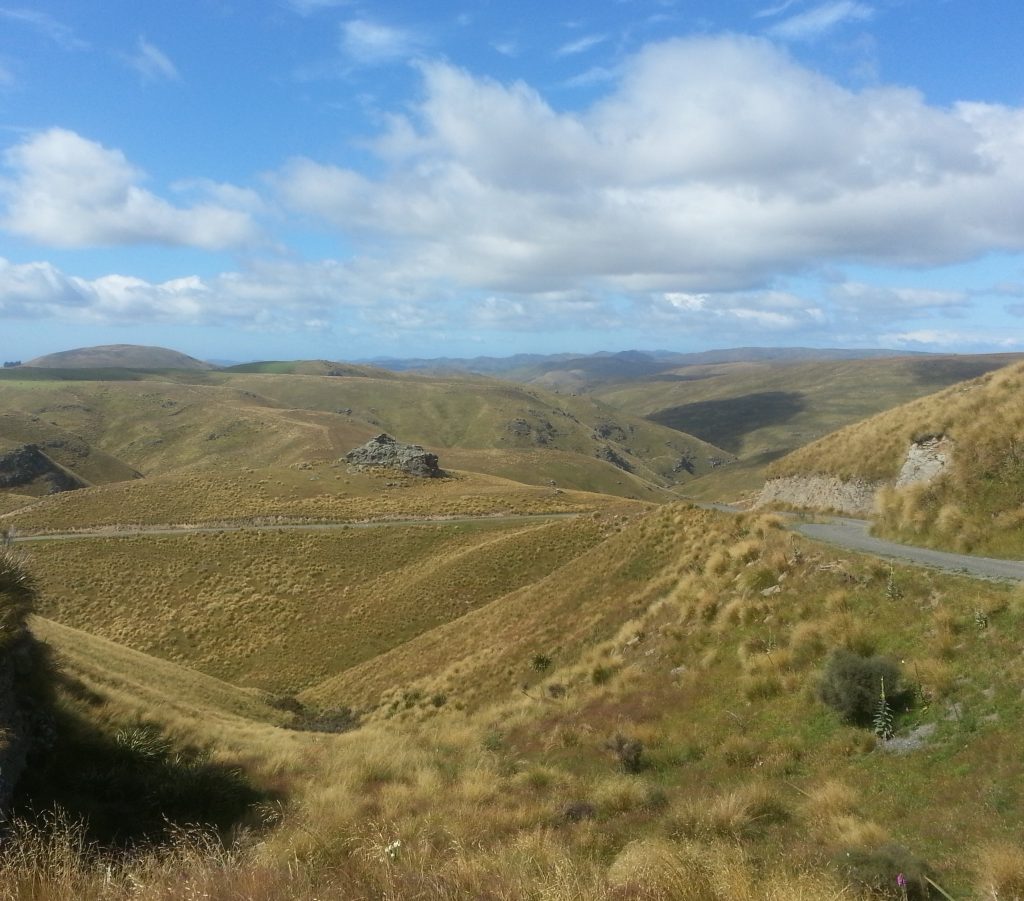
Deeper into the Taeiri Ridge hills we wound, between fields of tussock and speargrass populated only by lonely sheep. Just as we were about as far away from civilisation as we could get, I noticed a ruined building to our right. “Stop!” I cried, lest we pass by one of my favourite things without giving it a thorough investigation.

It soon became clear that we had in fact reached the town of Nenthorn, having stumbled across what remains of Patrick Talty’s St Bathans Hotel. Patrick, a “pioneer miner”, applied for this business site in 1889 at the start of the Nenthorn boom, and in those early days business would have been brisk. Accommodation was a real squeeze, with upwards of 50 customers a night clamouring for beds in a single hotel.
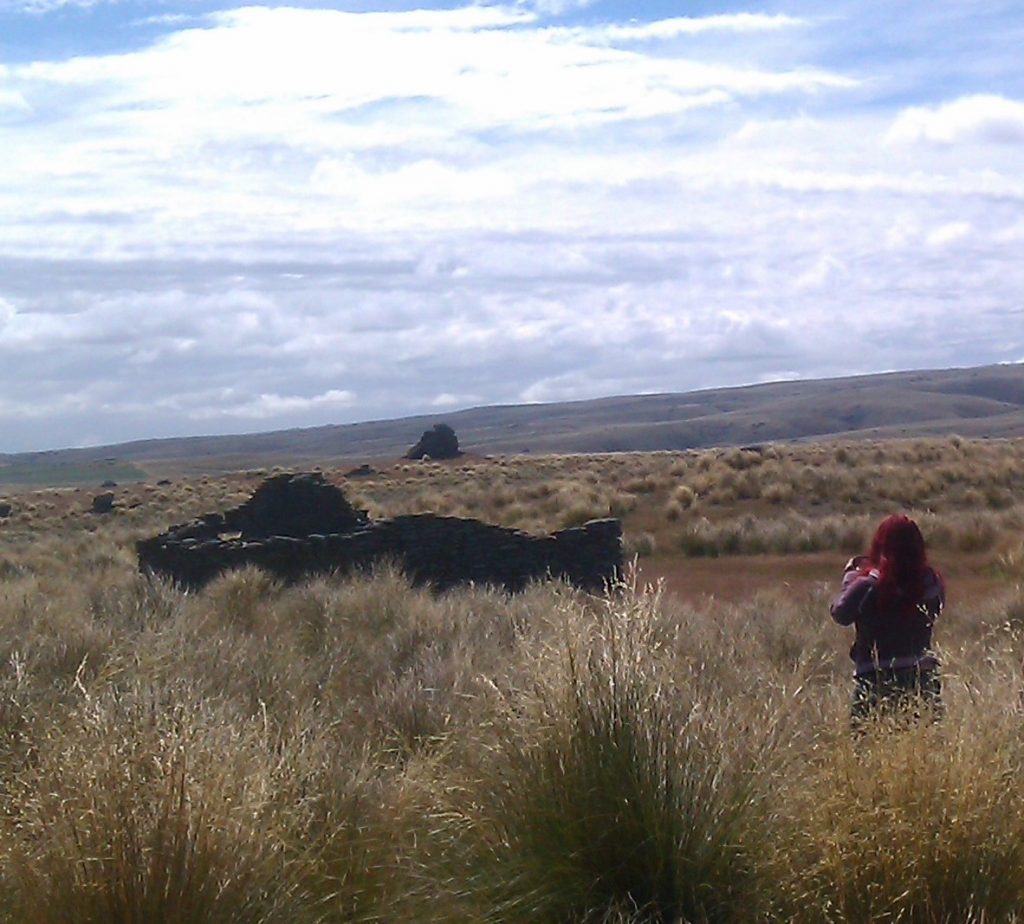
But Nenthorn’s star was to fall as quickly as it had risen and in 1892 Patrick was brought to court by the liquidator of Croesus Consolidated, which at one time had been the most promising of the public companies floated on this gold field. Patrick had shares in the company, but had not answered calls to pay in his share of the debt.
By 1894 he was further embroiled in the web of defaults and court cases that enmeshed the failing town, having failed to pay a debt for ale supplied. Only two months later the St Bathans Hotel burned down – although Patrick was able to collect insurance on it, and my suspicious mind wonders exactly how the fire started.
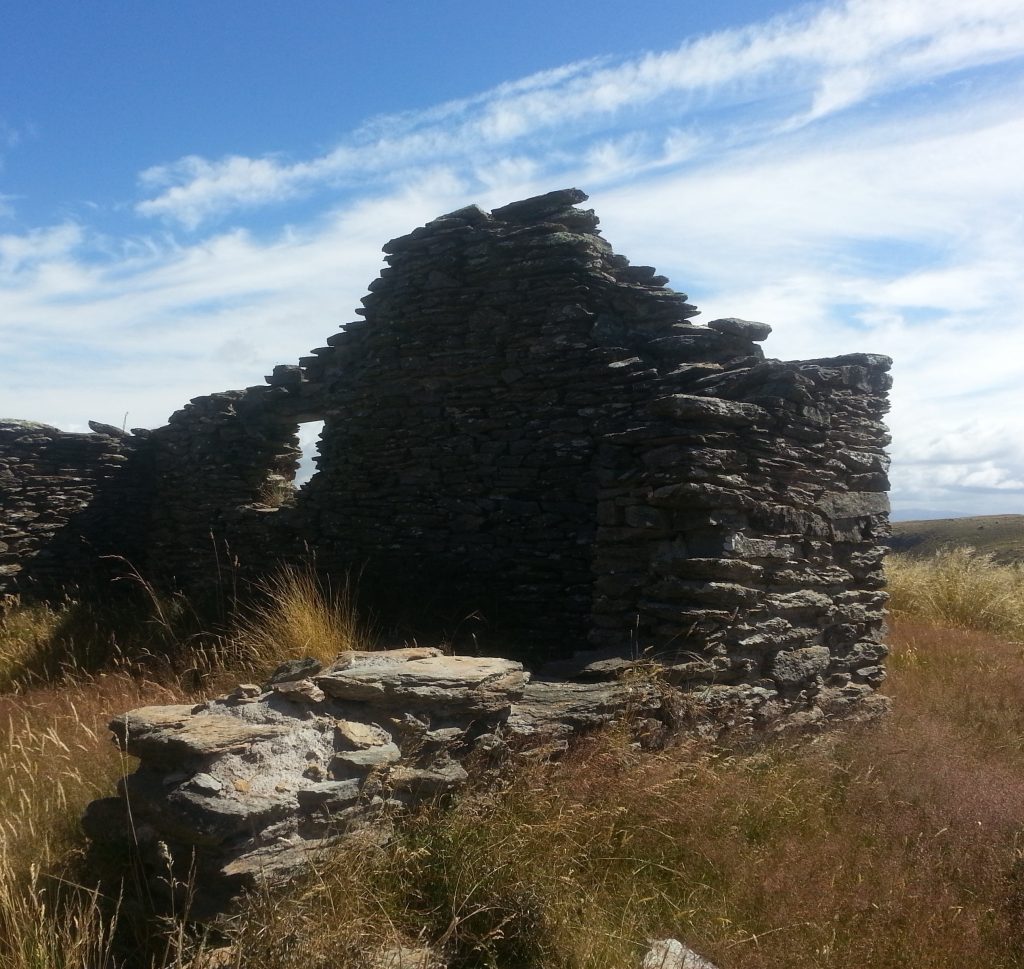
Things didn’t go so well for Patrick in the ensuing years. He relocated to Cardrona and continued mining, but came to the attention of authorities in 1905. At 70, he occupied a small hut with his 40-year-old son Simon, who was reportedly “a deformed cripple and an imbecile”. They had nothing but Patrick’s old age pension to live on and were “badly off for clothes”. There was talk of an allowance for Simon, but instead he was committed to Seacliff Asylum.
In 1911, Patrick’s situation was again under scrutiny when he was briefly moved to hospital. His filthy hut constructed from bags was found to be an uninhabitable health hazard and it was strongly felt that it should be destroyed.
Patrick died in 1913, penniless and alone, his body found in his hut several days after he had passed. He is buried in an unmarked grave in Cardrona Cemetery.
But before we dwell too long on this tragedy, let’s take a look at the town which an 1889 prediction had slated to become “the up-country city of Central Otago”. We left the St Bathans Hotel behind us and continued down Gordon St, the main road of this up-county city.
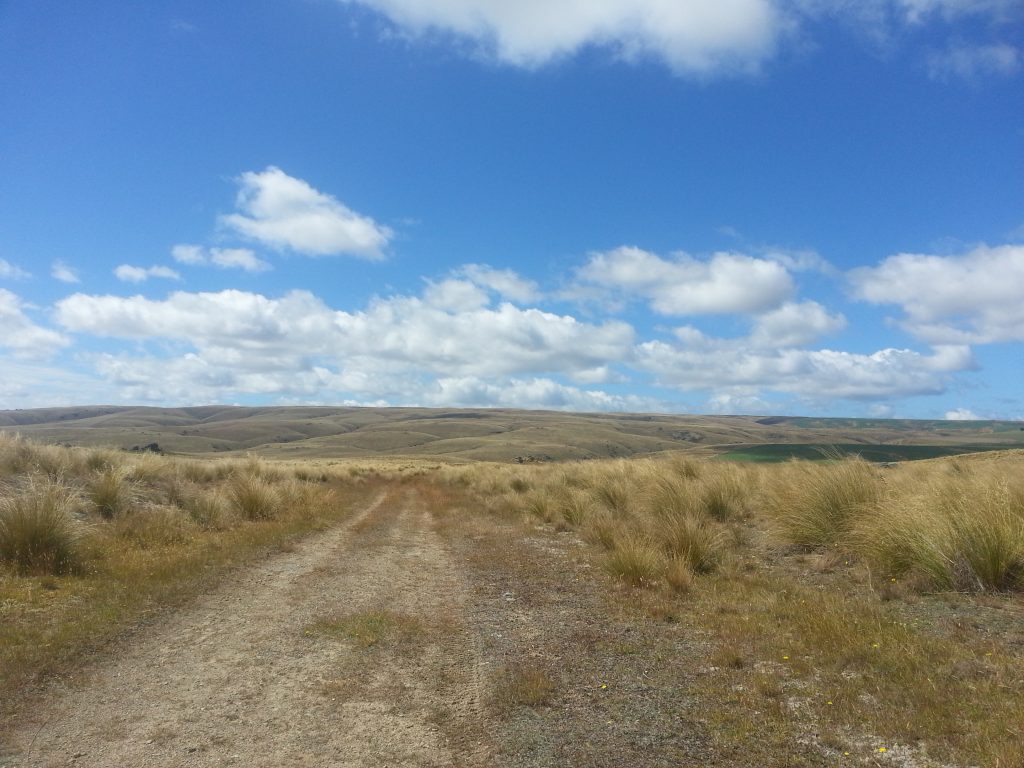
Judging by the one and only surviving photo of this township, most of the buildings here were made from wood, and have since well and truly disappeared. The only traces we found as we headed toward the hills were a single brick and a flattened rusty bucket embedded in the ground.
Further along, we found a mysterious fenced-off pile of stone and rusty wire. Up until at least the 80s, this had been a lone standing chimney, but gravity has finally taken its toll and brought it down.
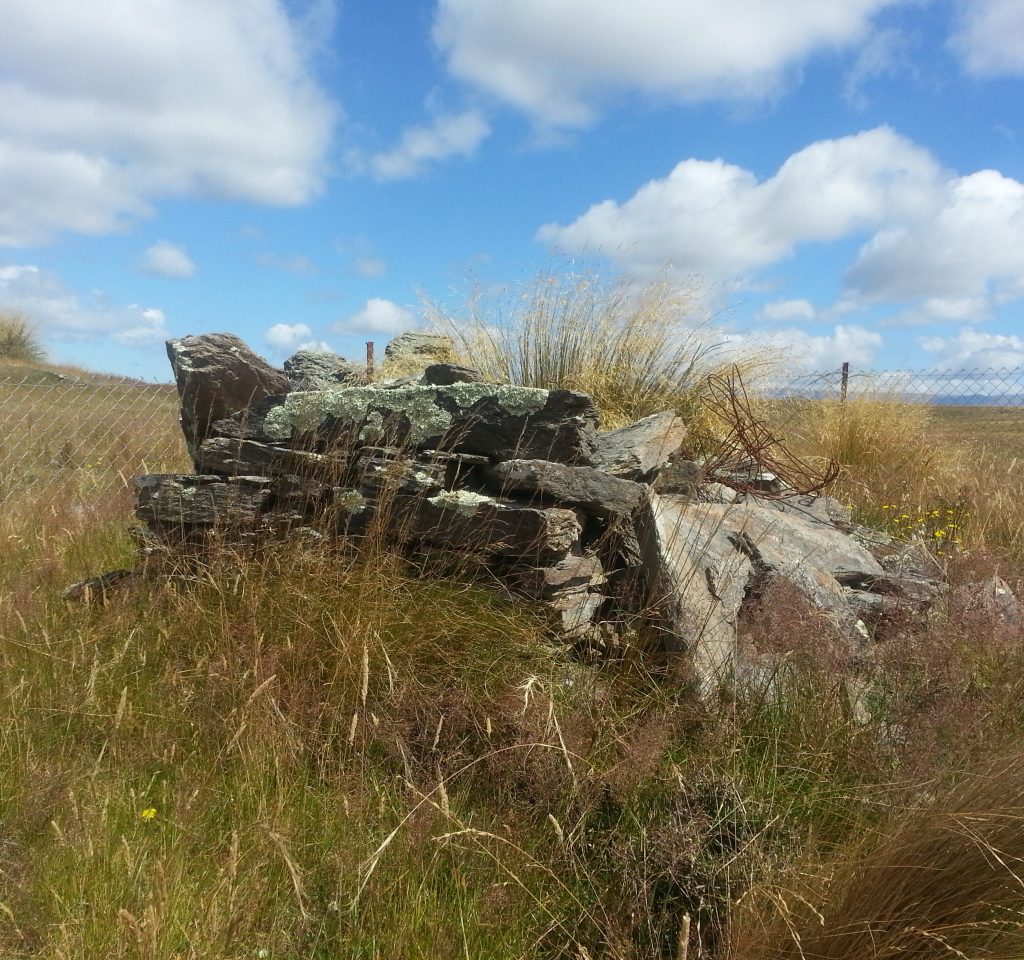
The 1880s depression in New Zealand hit the Central Otago gold mining community particularly hard, and when prospector William McMillan stumbled upon a likely-looking outcrop near here in 1888 there were many who were ready to believe it was just the miracle they so desperately needed. What followed was a storm of land claims, company formation and speculation as miners and investors rushed to secure their share of Nenthorn’s imagined riches.
We glanced around to see if we could see anything else of note and I espied an orange capped post sticking out of the tussock below us. So that is where we headed next, to find that it marked the site of an open shaft.
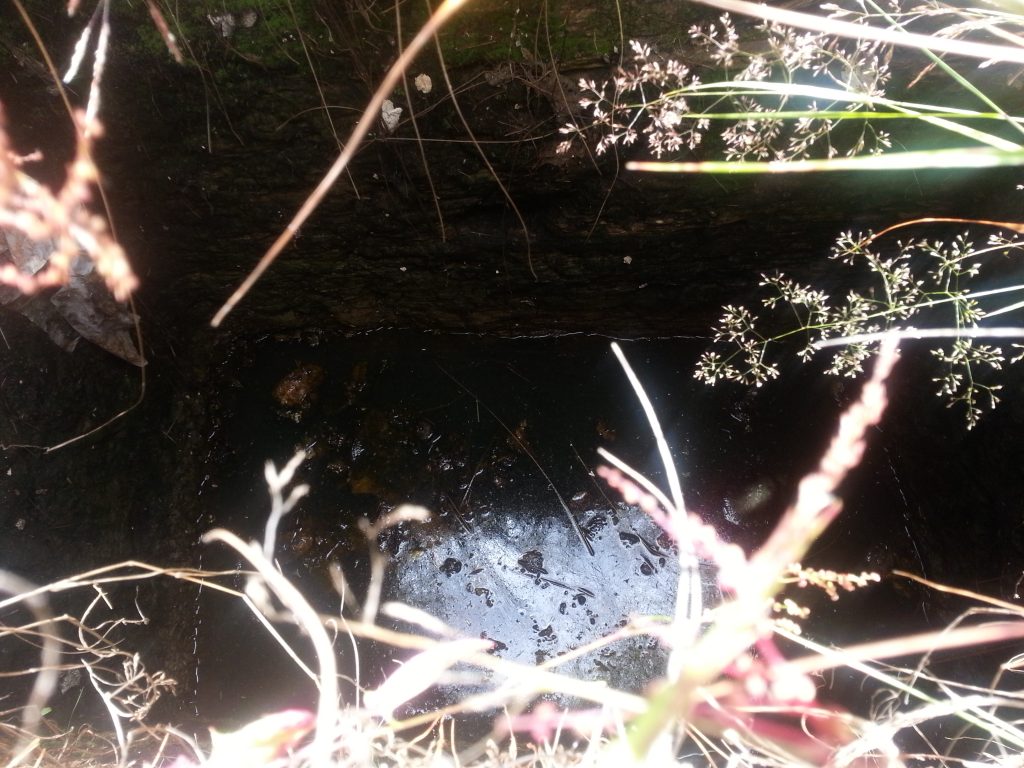
One of the major difficulties of the Nenthorn goldfield when it came down to actually working the claims was the lack of water in the area to drive the necessary machinery. There were two batteries here at one time, but they were awkwardly sited and inefficient. In ironic contrast, workers in the shafts were often forced to spend several hours of each shift pumping out excess water as seepage threatened to flood the mines.
This would be bad enough if the field were as rich as promoters claimed and investors had hoped, but the reefs were unreliable and the results of crushing rarely enough to justify the expense. Public confidence plummeted as the various companies, both public and private, began to struggle, and soon a complete collapse was underway. 1890 was a year of bankruptcies, liquidations and charges for unpaid debts. Workers left the town in droves, heading to the West Coast or Tasmania or Dunedin.
Seems our friend Patrick stuck it out longer than most, but his story of ruin was hardly unique.
We continued to poke around, discovering some ditches and ridges near a gully, as well as two parallel rows of upright stones that seemed to indicate an old path or garden border.
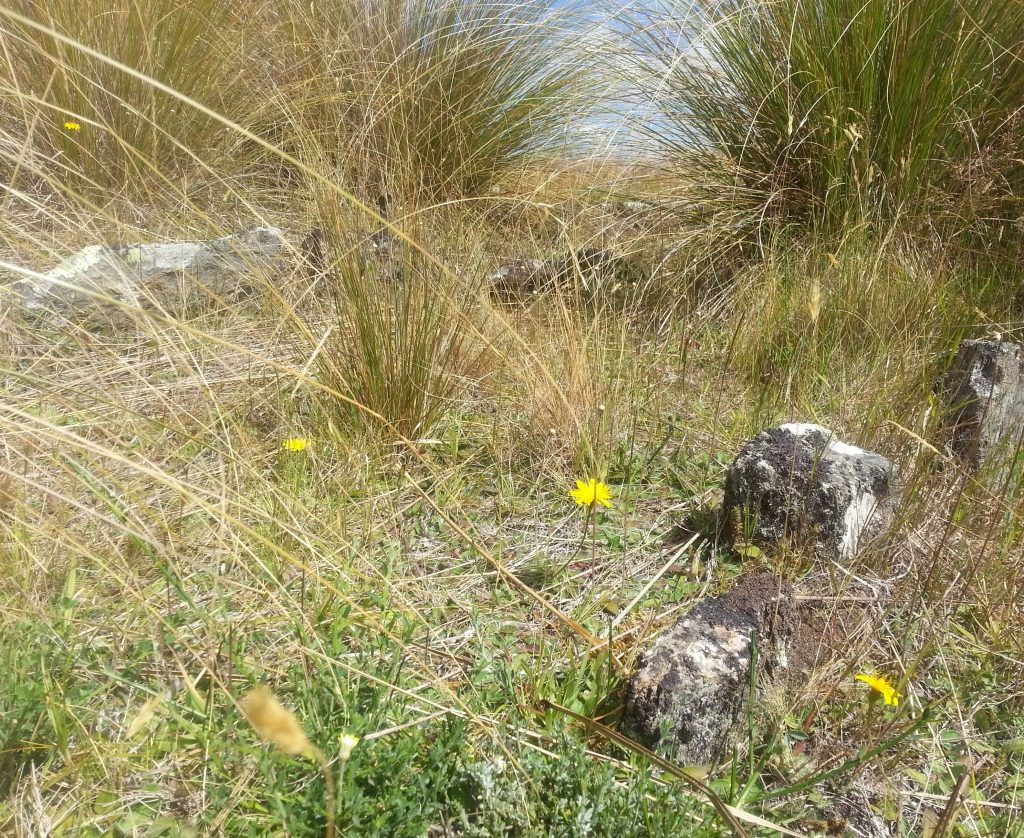
We proceeded to follow another vague rutted “road” which headed around the shoulder of a low hill. While the rest of the group continued ahead, I noticed an odd standing slab of schist off to one side. I’d read elsewhere about miner’s grave sites occasionally being marked in this way so made a detour to investigate.

I’m not sure if I was disappointed or relieved to find that my suspicion was unfounded when I discovered that the stone instead marked a narrow man-made ridge that cut a perfectly straight line towards the head of a dry gully. At intervals along this ridge I discovered more standing stones, and I finally caught up with my family who had cut around the gully to discover a much more interesting site.
Here in this isolated spot was another stone ruin, with the stump of a huge old pine tree standing in what would have once been the yard.
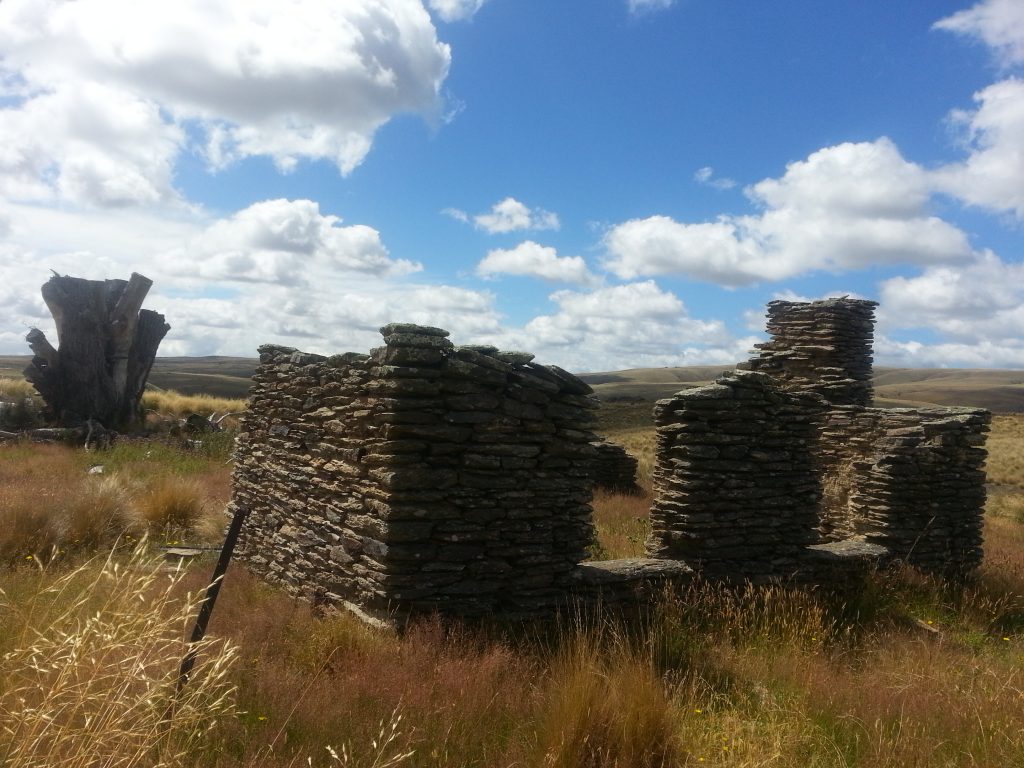
There’s a theory that this may have belonged to the local school master, as it is situated near the old site of the short-lived Nenthorn School, which opened in 1890 and closed in 1901. Around the remains of the fireplace there’s still remnants of the mortar which once boasted tiles.
We now decided that the best way back to our vehicle was to head up to the top of the low hill and then back cross-country to the road. We easily reached the summit and the shelter of a large schist tor before wending our way down to the lower ground.
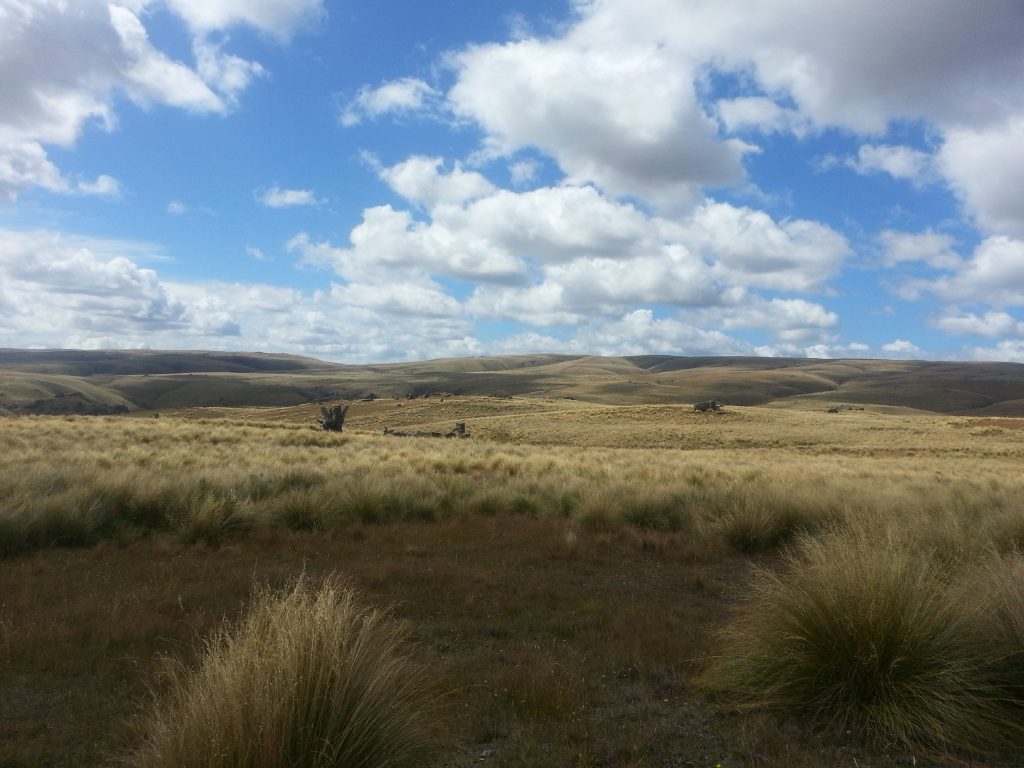
We quickly discovered that our chosen route was not as easy as we had anticipated, with the rough ground and massed clumps of tussock quickly wearing us out. But eventually we made it back to Gordon St and thus to our vehicle.
Our investigation done, we picnicked in the main street, refreshing ourselves on tea and sandwiches in the Central Otago sun. Then we said our goodbyes to the empty field of tussock that had once bustled with the activity of a thousand hopeful miners and businessmen. Behind us, Talty’s hotel slowly faded back into the landscape.
References:
THE COURTS. Mount Ida Chronicle, Volume XVIII, Issue 1039, 31 October 1889
Nenthorn: Gold and the Gullible by Terry Hearn
RESIDENT MAGISTRATE’S COURT. Otago Daily Times, Issue 9569, 27 October 1892
RESIDENT MAGISTRATE’S COURT. Otago Daily Times, Issue 9959, 30 January 1894
THE WEATHER. Evening Star, Issue 9338, 10 March 1894
LAKE COUNTY COUNCIL. Lake Wakatip Mail, Issue 2553, 27 January 1905
LAKE COUNTY COUNCIL. Lake Wakatip Mail, Issue 2556, 17 February 1905
LAKE COUNTY COUNCIL. Lake County Press, Issue 2369, 30 March 1911
Queenstown Lakes District Council Cemeteries
The Archaeology of Otago by Jill Hamel


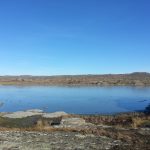

We have been up there on and off for the last couple of motnhs looking for the remains of one of the stamper batteries which we finally located over Easter. Not a lot left of it but still good to find the site. Our next Journey will be to find the other battery. If you are following Ramrock Road towards Nenthorn Valley, just before you go across the bridge and ford, there is another sizeable stone ruin in the paddock off to the right. Follow the line of the creek and you cant miss it. This is a beautiful part of the country and the history is amazing. Enjoy following your blogs
Thanks for the info, I’ll definitely have to take another trip out to find all the things I missed this time!
HI Chris,
My name is Craig – I have had a reasonable search over the Nenthorn area but no luck in finding the stamping battery remains – any chance of a few tips.I am only interested in having a look and taking a few photos – won’t disturb anything.
Cheers Craig
Good on you for sussing it out, I wish I had a keen crew to cavort with like that.
Is it possible the town is ‘North Tent’ spelt backwards?
Thanks Rick, yes a good crew is a must! I’m not sure where the name of the town came from
My family the phalans, good Irish people had a mine in nenthorn called bonanza, the year was around 1887 still have the photos of the mine and buildings and the family, have some good stories too . tough times
How fantastic you have those treasures! I hope your family did better than most!
Thanks for the interesting article. I will have to visit on my journeys.
I had relatives who worked at the Nenthorne Mines before 1891.
It was promoted as the last great Otago Gold Rush, and a complete township was planned and companies floated.
http://www.smithsbookshop.co.nz/bookshop/isbn0959772375.php
There is a photo that exists that claims to be the “only known photo of Nenthorn’s Main Street, 1890s”.
That’s a great book for an overview of the town’s history
I only just found Kiwi Adventures website here but Wow! Well I just have to say, this whole website is just fantastic, thank you Amanda and crew for posting your adventures – they and the sights you visit are really interesting and amazing. I would have loved to explore some of these places when I lived in Dunedin. Didnt even know these places existed, thank you